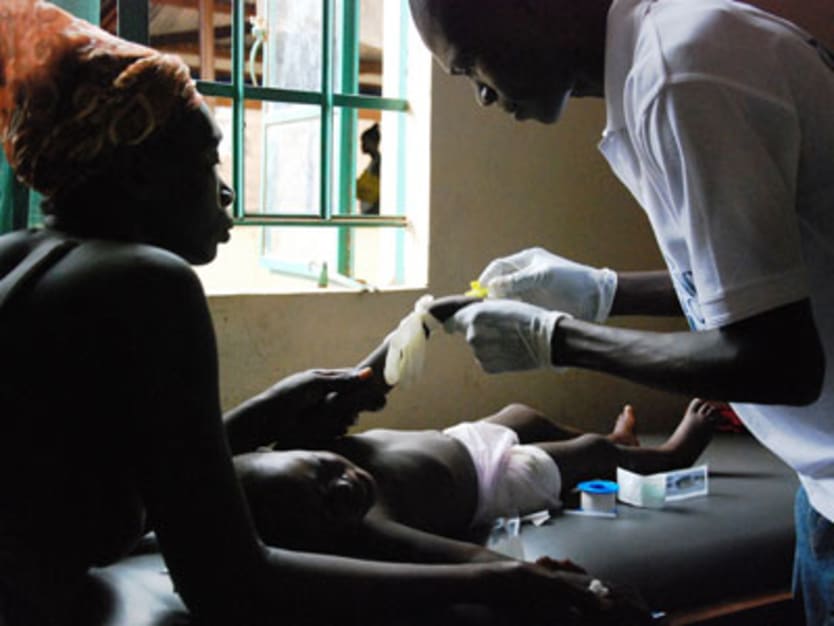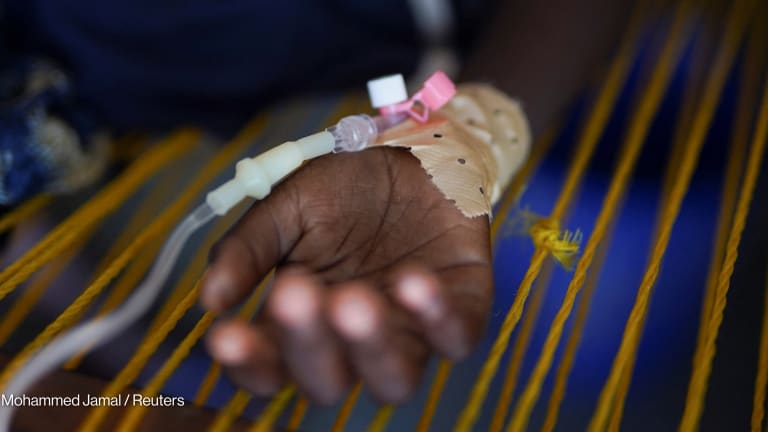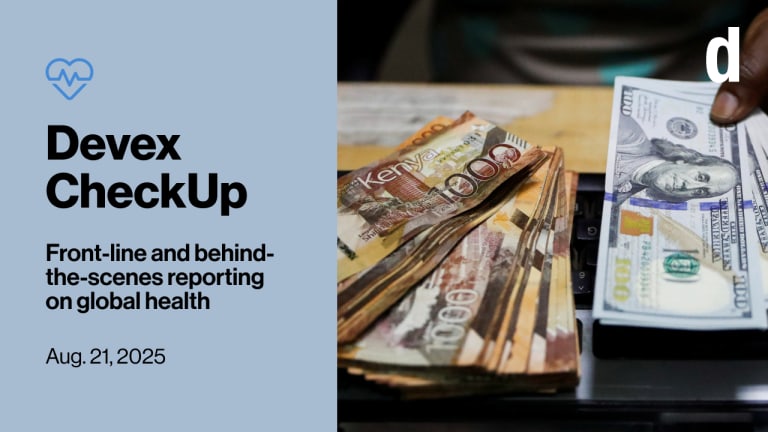
Today, the United Nations teamed up with universities across the world and global civil society to launch a new global action plan to tackle the two biggest killer diseases of children under five years old — pneumonia and diarrhea.
Many people are unaware that these two diseases — both of which are eminently preventable and highly treatable using existing technology and medicines — are still the biggest causes of under-5 mortality in the world; between them, they account every year for over 2 million of the 6.9 million under-5 child deaths.
This loss of life is unnecessary. In the United Kingdom, as across the developed world, child mortality from these diseases is virtually non-existent. The entirety of this burden is falling on the children living in middle- and low-income countries, and within these societies, they are almost always the most deprived children. Nearly 90 percent of the child mortality associated with these diseases comes from Africa and South Asia.
The difficulty in tackling these diseases has not been a lack of knowledge about what works, but a lack of will to invest in the solutions alongside little or no collaboration and coordination to ensure that resources are used most effectively.
This new initiative is to be applauded because it lifts the sights of policy makers and health funders across the world to the true goal — the elimination of two of the world’s most prevalent but preventable diseases that are killing children — and emphasises the need to build efficient, cost-effective systems that address all the causes.
Instead of focusing on one part of the solution, one vaccine for example or village hand-pumps, it encourages all the people working on these issues to work together.
Why is this important?
The headline “World health leaders develop integrated approaches to improving public health” certainly doesn’t sound as “sexy” as “Scientists discover cure for everything.” But the truth is that these deaths are the result of a number of factors relating to poverty and failings in social services and health care, which cannot be rectified with a single response.
These diseases have many of the same root causes, particularly malnutrition and unhealthy environments, so certain combined responses can have a huge impact on both. Malnutrition is of particular interest, as it is not only a contributing factor in pneumonia and diarrhea deaths, but it is also an outcome of repeated bouts of diarrhoea. A combined approach to these diseases will allow us to reduce the diarrhea that causes malnutrition, and from that reduce the malnutrition that causes pneumonia and further diarrhoea.
Similarly, while vaccines are a fantastic way to prevent disease, they are sometimes found to be less effective in people who are malnourished or frequently suffer from diarrhoea. Combining water, sanitation and hygiene with vaccines as part of a comprehensive approach to prevent child deaths will make poverty reduction work more effectively.
Health professionals who are administering vaccines can and should use the opportunity to promote better hygiene behavior. This will also make vaccines more effective through reducing the environmental obstacles preventing them from working optimally.
For too long health programs have focussed on single diseases, and on curative treatments rather than preventive public health. This new global plan reverses this trend.
WaterAid focuses on access to water, sanitation and hygiene, which we see as a critical first step to ensuring healthy living environments and to eliminate these diseases. While we primarily work with government departments focussing on public infrastructure or specialised water and sanitation ministries, there is a great deal that health programs can offer to support these efforts.
This may sound surprising, but not all the problems related to water and sanitation require engineering solutions. A great deal can be achieved through the promotion of hygienic behaviors, and sharing simple home-constructed technologies that can be sustained locally. These are things that the health sector is already well placed to provide, but has until now often been left to water and sanitation departments, increasing the strain on poor countries’ already limited resources.
At WaterAid we are enthusiastic about this renewed global effort to ensure coordinated, joined-up approaches to these killer diseases. We believe this plan will help prevent the waste of resources caused by different programs repeating or even undermining each other’s work as well as potentially saving millions of children’s lives.
This plan demonstrates that to eliminate child mortality from these two killer diseases depends upon tackling their root causes through a sustainable approach to public health, as well as ensuring that people who fall sick now are correctly treated. With 2 million children dying of these preventable diseases, the time to come together to end the crisis is long overdue, and this global plan must be implemented.
Join the Devex community and access more in-depth analysis, breaking news and business advice – and a host of other services – on international development, humanitarian aid and global health.








